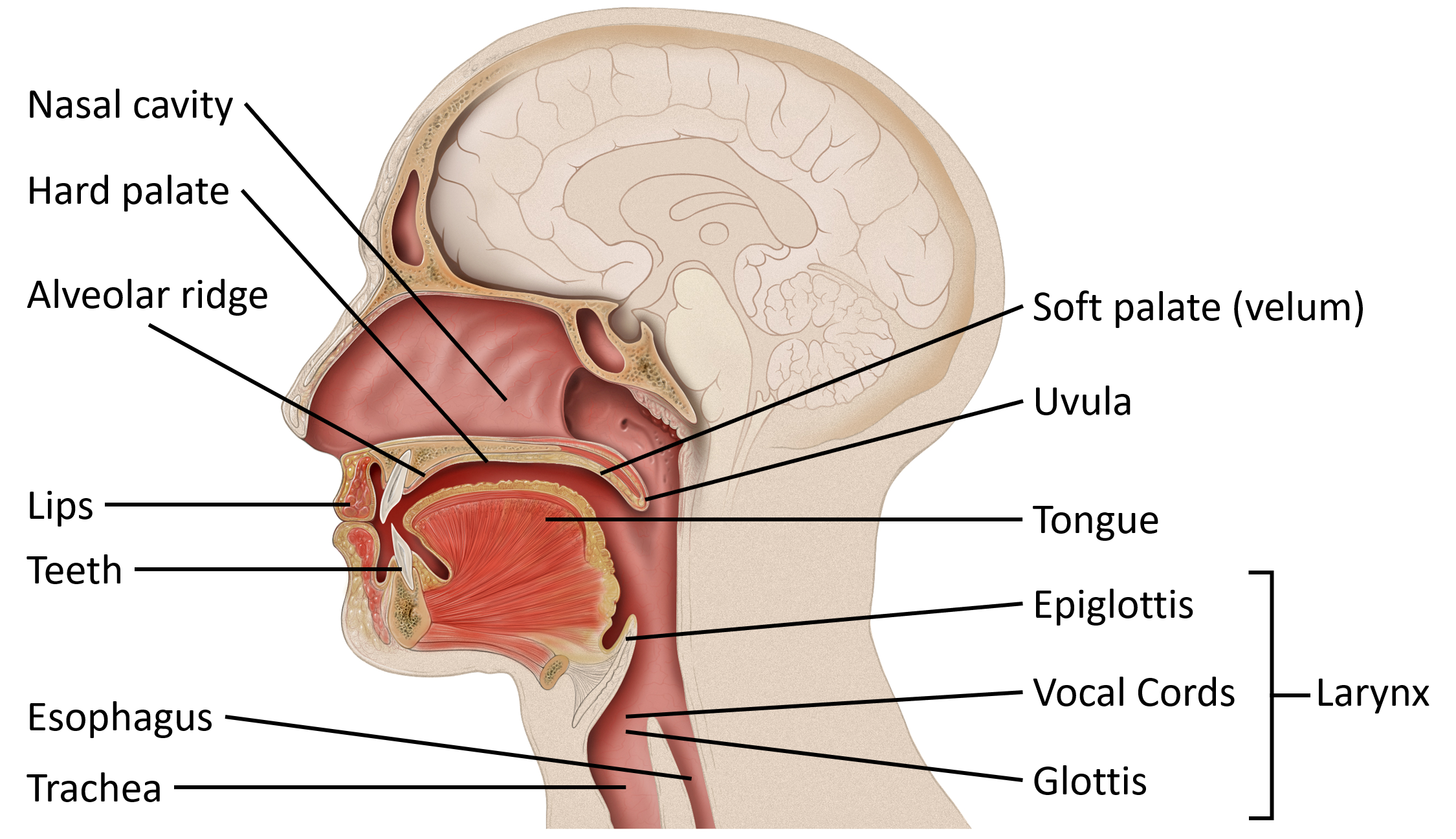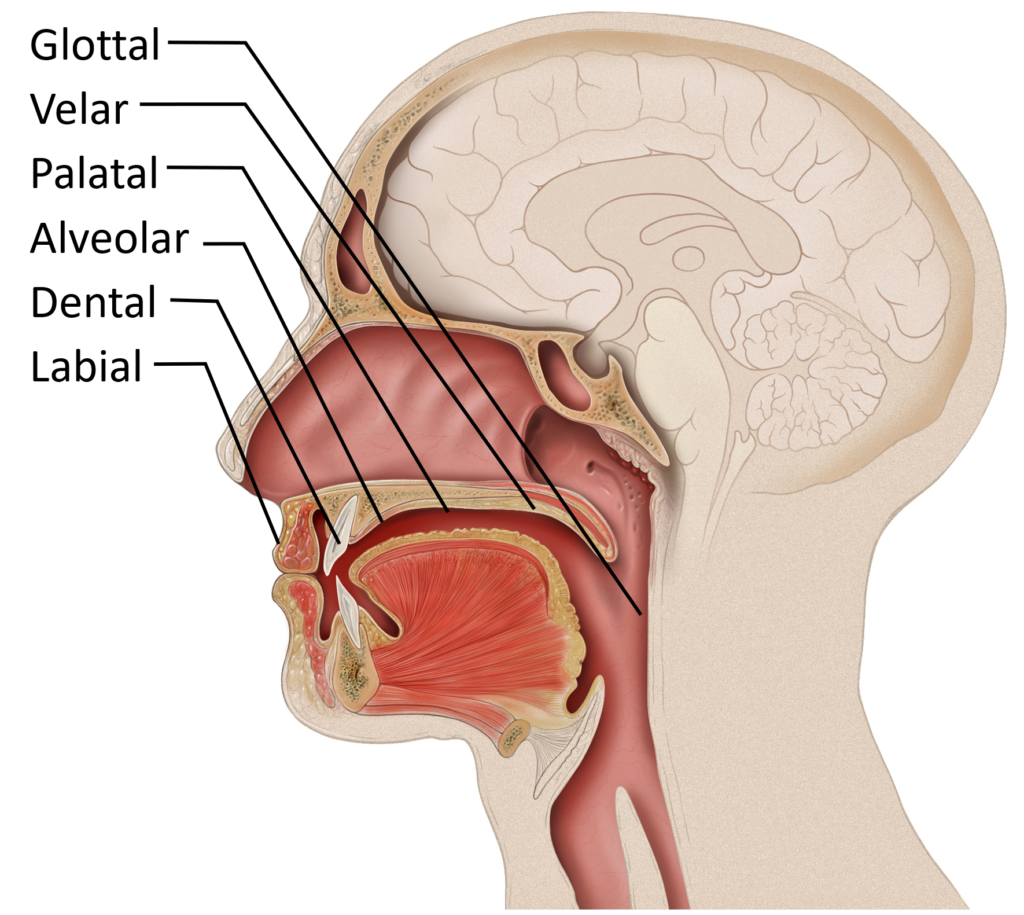2.2 The Articulatory System
Dinesh Ramoo
We speak by moving parts of our vocal tract (See Figure 2.1). These include the lips, teeth, mouth, tongue and larynx. The larynx or voice box is the basis for all the sounds we produce. It modified the airflow to produce different frequencies of sound. By changing the shape of the vocal tract and airflow, we are able to produce all the phonemes of spoken language. There are two basic categories of sound that can be classified in terms of the way in which the flow of air through the vocal tract is modified. Phonemes that are produced without any obstruction to the flow of air are called vowels. Phonemes that are produced with some kind of modification to the airflow are called consonants. Of course, nature is not as clear-cut as all that and we do make some sounds that are somewhere in between these two categories. These are called semivowels and are usually classified alongside consonants as they behave similar to them.

While vowels do not require any modifications to the airflow, the production of consonants requires it. This obstruction is produced by bringing some parts of the vocal tract into contact. These places of contact are known as places of articulation. As seen in Figure 2.2, there are a number of places of articulation for the lips, teeth, and tongue. Sometimes the articulators touch each other as in the case of the two lips coming together to produce [b]. At other times, two articulators come into contact as when the lower lip folds back into the upper teeth to produce [f]. The tongue can touch different parts of the vocal tract to produce a variety of consonants by touching the teeth, the alveolar ridge, hard palate or soft palate (or velum).

While these places of articulation are sufficient for describing how English phonemes are produced, other languages also make use of the glottis and epiglottis among other parts of the vocal tract. We will explore these in more detail later.
Image description
Figure 2.1 Parts of the Human Vocal Tract
A labeled image of the anatomical components of the human vocal tract, including the nasal cavity, hard palate, soft palate or velum, alveolar ridge, lips, teeth, tongue, uvula, esophagus, trachea, and the parts of the larynx, which include the epiglottis, vocal cords, and glottis.
[Return to place in the text (Figure 2.1)]
Figure 2.2 Places of Articulation
A labeled image illustrating the anatomical components of the human vocal tract that are involved in English phonemes. These include the glottal, velar, palatal, dental, and labial structures.
[Return to place in the text (Figure 2.2)]
Media Attributions
- Figure 2.1 Parts of the Human Vocal Tract is an edited version of Mouth Anatomy by Patrick J. Lynch, medical illustrator, is licensed under a CC BY 2.5 licence.
- Figure 2.2 Places of Articulation is an edited version of Mouth Anatomy by Patrick J. Lynch, medical illustrator, is licensed under a CC BY 2.5 licence.
A speech sound that is produced without complete or partial closure of the vocal tract.
A speech sound that is produced with complete or partial closure of the vocal tract.
A consonant that is phonetically similar to a vowel but functions as a consonant. Also known as a glide.
The point of contact between the articulators.

